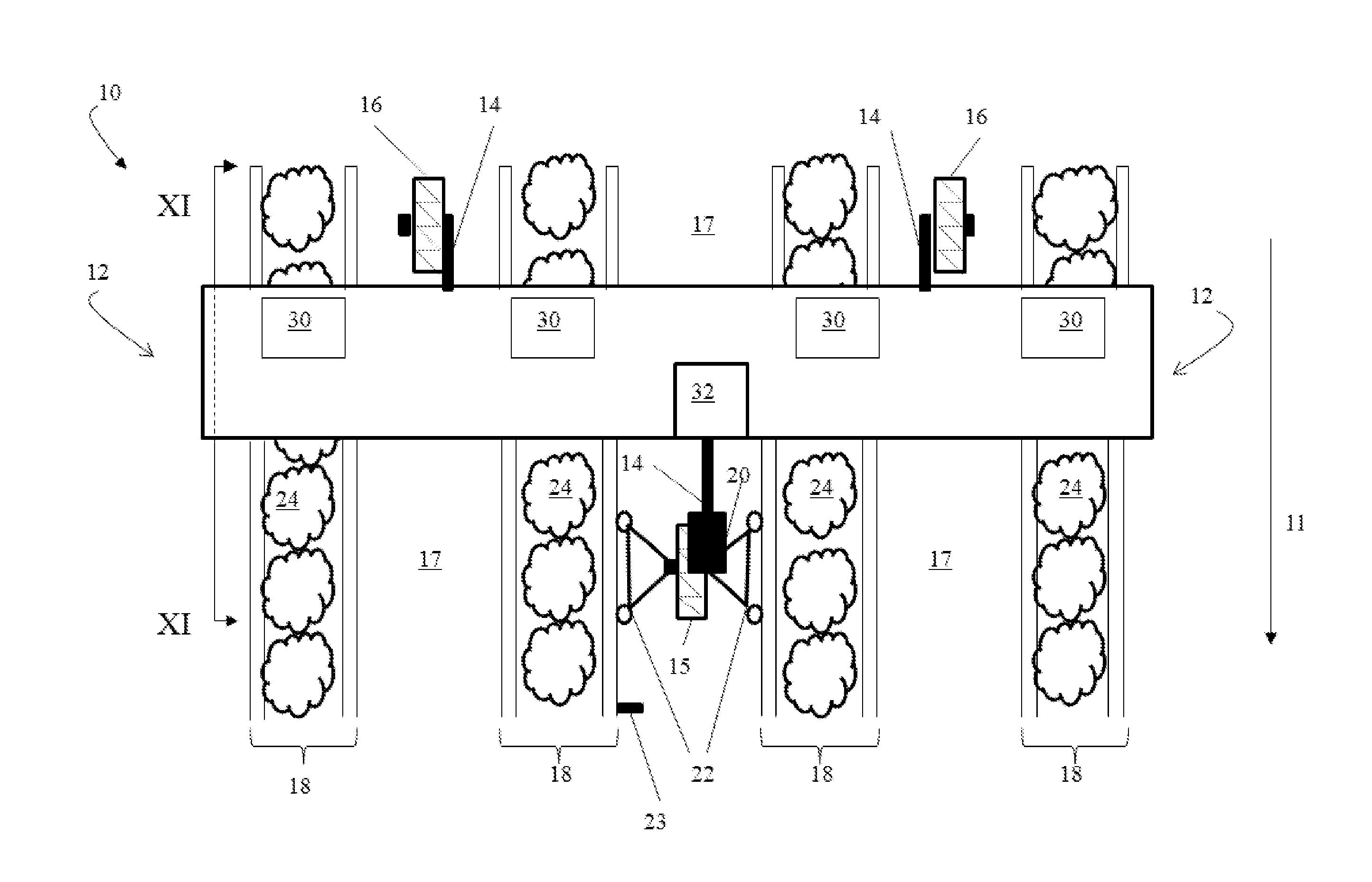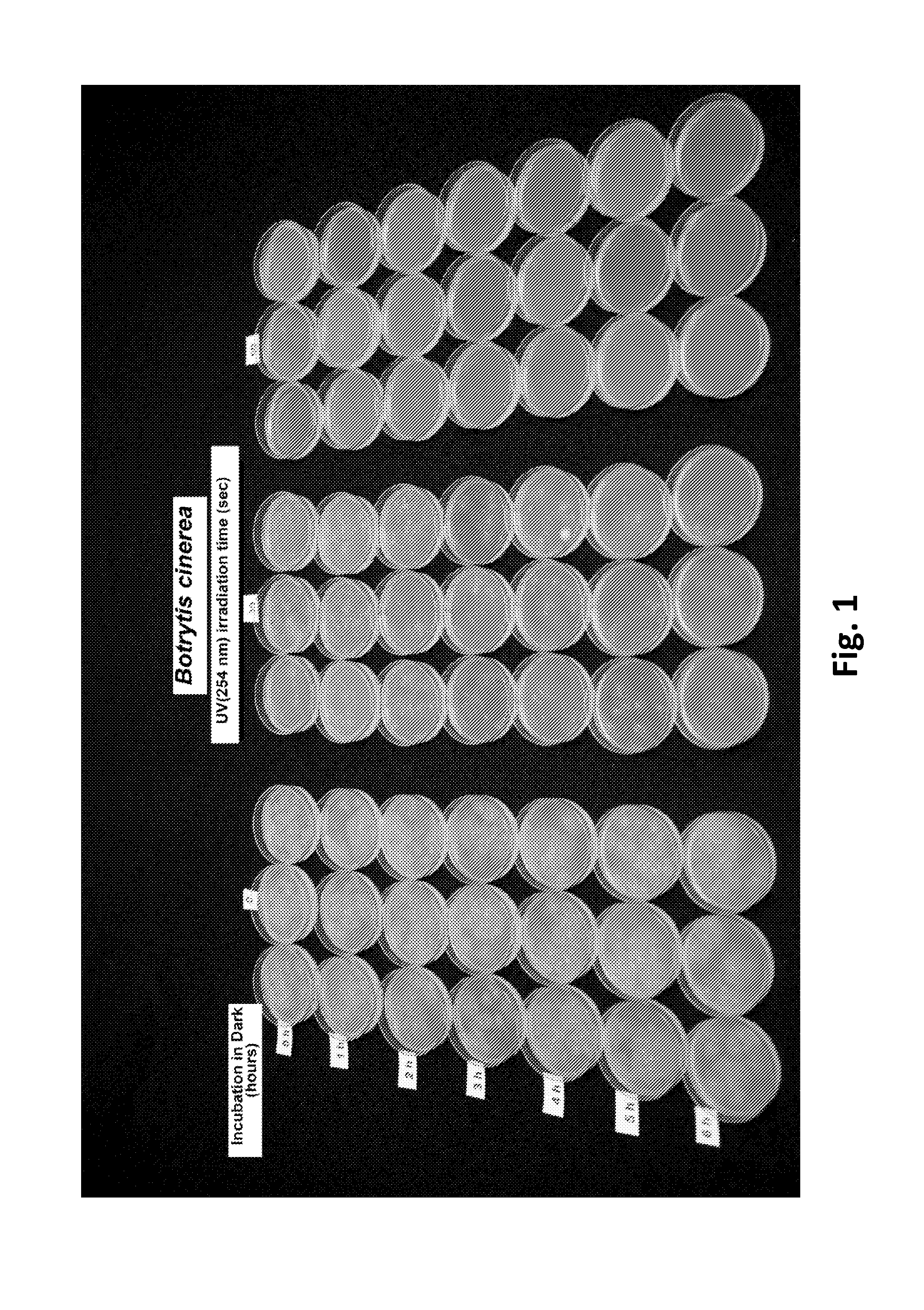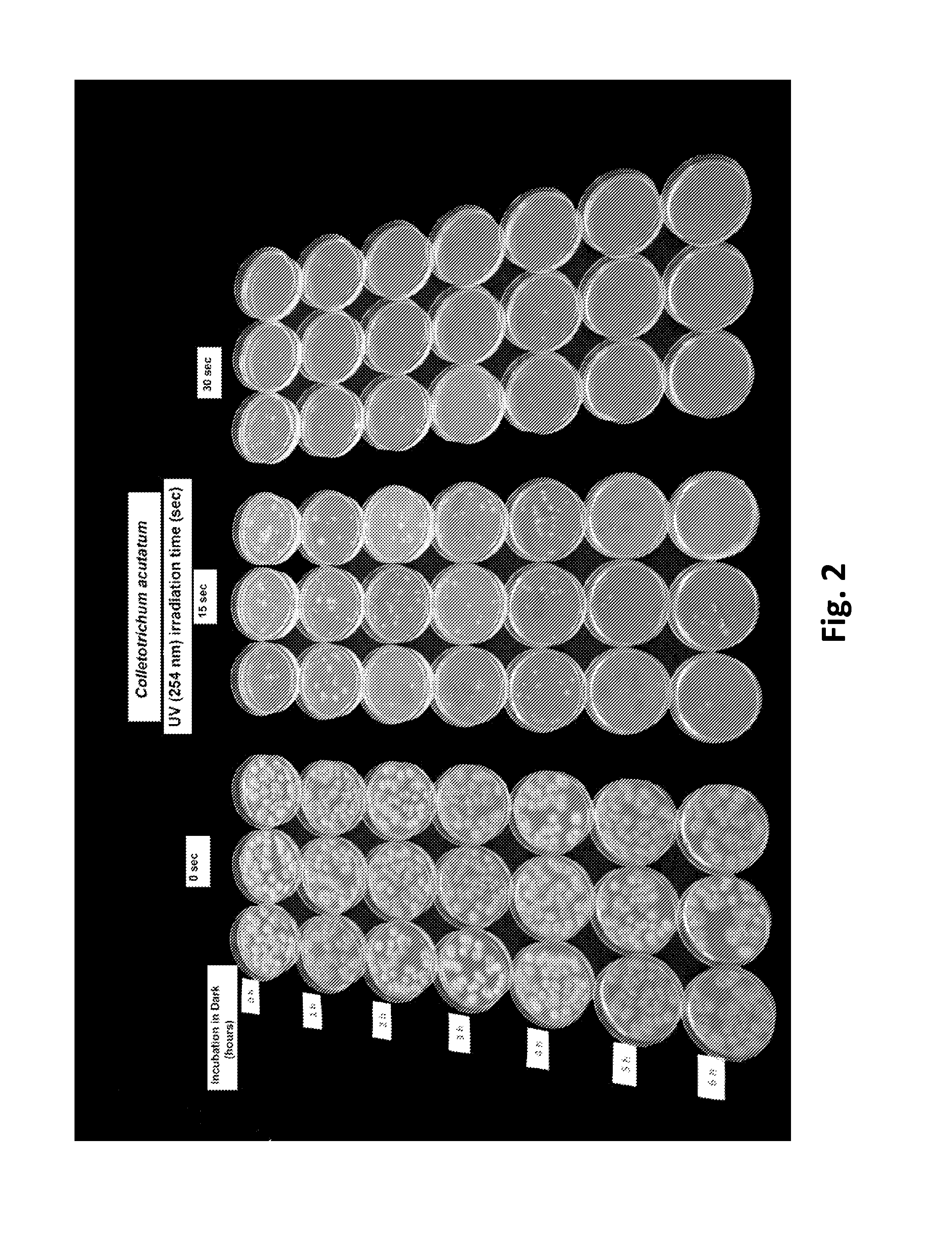Method for Controlling Fungal Plant Pathogens Using a Combination of UV Radiation Followed by Antagonist Application and Dark Period
a technology of uv radiation and dark period, which is applied in the direction of disinfection, biocide, instruments, etc., can solve the problems of pollen germination, or quality of fruit or vegetables, and reduce survival and infection by plant pathogens. , to achieve the effect of reducing survival and infection, and limited or no effect on plant growth
- Summary
- Abstract
- Description
- Claims
- Application Information
AI Technical Summary
Benefits of technology
Problems solved by technology
Method used
Image
Examples
example 1
Pathogens
[0051]Botrytis cinerea (isolate J4) was originally isolated from decayed apple and was used in various earlier studies on pome fruits and strawberries because it is one of the most aggressive isolates in our collection. Colletotrichum acutatum was isolated from a strawberry and was kindly provided by Dr. Barbara Smith from USDA-ARS Thad Cochran Southern Horticultural Lab, in Poplarville, Miss. Conidia of B. cinerea were collected from 10-14 day-old cultures grown on potato dextrose agar (PDA) by a hand-held vacuum powered cyclone spore collector (Geoff Harms, Physics Laboratory, University of Minnesota, St. Paul, Minn.), resuspended in sterile distilled water (SDW), sonicated for 60 sec, vortexed, and adjusted to desired concentrations with hemacytometer. Conidia of C. acutatum were collected from 10-14 day-old cultures grown on oatmeal agar (OMA) with inoculation loop, suspended in SDW, sonicated for 60 sec, vortexed, and adjusted to desired concentration with hemacytomete...
example 2
UV-C Irradiation of Conidia
[0053]All UV-C irradiation was conducted with lamps having a peak emission at 254 nm (model TUV PL-L 55 Watt; Phillips North America Corp. Andover, Mass.). The lamp was mounted on a frame that allowed for the adjustment of a distance to the targeted irradiation surface (plates or plants) to 30 cm. This distance was selected because it reflects a distance in the future commercial irradiation apparatus. The frame was enclosed to prevent any light penetration of the enclosure. UV-C is applied in the dark, i.e., there is darkness all around the plants except for the UV-C source. UV light was turned on at least 10 minutes prior to irradiation to ensure consistent intensity levels. The irradiation intensity at the distance of 30 cm was 0.206 W / m2 (20.6 μW / cm2). Thus, the 60 sec illumination corresponded to 12.36 J / m2 (0.001236 J / cm2). Irradiance was measure with a calibrated spectrometer (StellarNet, Inc. EPP2000, Tampa, Fla.).
[0054]Conidial suspension adjusted ...
example 3
Effects of UV-C on Strawberry Pollen Viability, Pollen Germination, Pollen Tube Growth, and Leaf Chlorophyll
[0058]No chlorophyll degradation was observed in leaves of strawberry plants irradiated with UV-C for 30 or 60 sec twice a week for seven weeks (FIG. 4). Significant chlorophyll damage was demonstrated in plants irradiated a single time for 2, 4 or 6 hr, and the damage progressed as the time between irradiation and sampling increased up to 11 days, the duration of the experiment (FIG. 3).
[0059]Fully-opened flowers with bright yellow anthers were collected from multiple plants in greenhouse culture. The anthers were removed using sterile forceps and placed in a petri plate (10-cm) overnight to promote dehiscence. The following day the plate was agitated to release pollen from the anthers. The anthers were removed and the pollen collected from all flowers was mixed to create a homogenous blend. The pollen was divided among multiple 5-cm plates to accommodate the number of treatm...
PUM
| Property | Measurement | Unit |
|---|---|---|
| peak wavelength | aaaaa | aaaaa |
| wavelengths | aaaaa | aaaaa |
| wavelengths | aaaaa | aaaaa |
Abstract
Description
Claims
Application Information
 Login to View More
Login to View More - R&D
- Intellectual Property
- Life Sciences
- Materials
- Tech Scout
- Unparalleled Data Quality
- Higher Quality Content
- 60% Fewer Hallucinations
Browse by: Latest US Patents, China's latest patents, Technical Efficacy Thesaurus, Application Domain, Technology Topic, Popular Technical Reports.
© 2025 PatSnap. All rights reserved.Legal|Privacy policy|Modern Slavery Act Transparency Statement|Sitemap|About US| Contact US: help@patsnap.com



